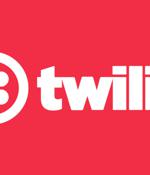Security News

The company says they first learned of the breach after MailChimp disabled their account without warning on August 8th. DigitalOcean used this MailChimp account to send email confirmations, password reset notifications, and alerts to customers. "We were formally notified on August 10th by Mailchimp of the unauthorized access to our and other accounts by what we understand to be an attacker who had compromised Mailchimp internal tooling," explains a security advisory from DigitalOcean.

With the Evil PLC attack, the controller acts as a means to an end, permitting the threat actor to breach a workstation, access to all the other PLCs on the network, and even tamper with the controller logic. Put differently, the idea is to "Use the PLC as a pivot point to attack the engineers who program and diagnose it and gain deeper access to the OT network," the researchers said.

The attacker behind the recent Twilio data breach may have accessed phone numbers and SMS registration codes for 1,900 users of the popular secure messaging app Signal. "Among the 1,900 phone numbers, the attacker explicitly searched for three numbers, and we've received a report from one of those three users that their account was re-registered," the Signal team shared on Monday.

Customer engagement platform Twilio on Monday disclosed that a "Sophisticated" threat actor gained "Unauthorized access" using an SMS-based phishing campaign aimed at its staff to gain information on a "Limited number" of accounts. The social-engineering attack was bent on stealing employee credentials, the company said, calling the as-yet-unidentified adversary "Well-organized" and "Methodical in their actions." The incident came to light on August 4.

Cloud communications giant Twilio, the owner of the highly popular two-factor authentication provider Authy, says that it has so far identified 125 customers who had their data accessed during a security breach discovered last week. "We have identified approximately 125 Twilio customers whose data was accessed by malicious actors for a limited period of time, and we have notified all of them," Twilio revealed in an update to the original disclosure.

An authentication bypass Zimbra security vulnerability is actively exploited to compromise Zimbra Collaboration Suite email servers worldwide. Zimbra is an email and collaboration platform used by more than 200,000 businesses from over 140 countries, including over 1,000 government and financial organizations.

Cisco Systems revealed details of a May hack by the Yanluowang ransomware group that leveraged a compromised employee's Google account. "During the investigation, it was determined that a Cisco employee's credentials were compromised after an attacker gained control of a personal Google account where credentials saved in the victim's browser were being synchronized," wrote Cisco Talos in a lengthy breakdown of the attack.

Web infrastructure company Cloudflare on Tuesday disclosed at least 76 employees and their family members received text messages on their personal and work phones bearing similar characteristics as that of the sophisticated phishing attack against Twilio. The attack, which transpired around the same time Twilio was targeted, came from four phone numbers associated with T-Mobile-issued SIM cards amd was ultimately unsuccessful.

Cloudflare says some of its employees' credentials were also stolen in an SMS phishing attack similar to the one that led to Twilio's network being breached last week. Although the attackers got their hands on Cloudflare employees' accounts, they failed to breach its systems after their attempts to log in using them were blocked since they didn't have access to their victims' company-issued FIDO2-compliant security keys.

Cloud communications company Twilio has announced that some of it employees have been phished and that the attackers used the stolen credentials to gain access to some internal company systems and customer data.Apparently, Twilio employees were not the only ones targeted by these attackers.